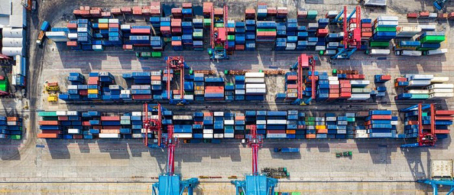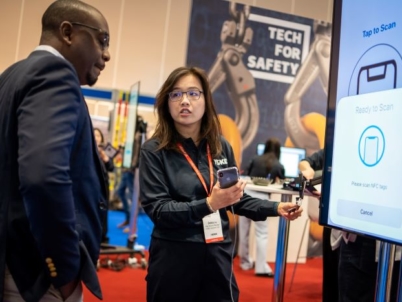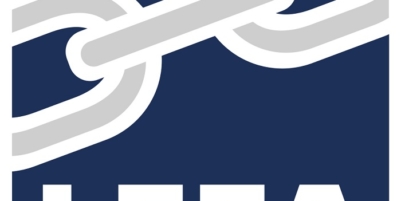-
ROSSLARE EUROPORT TARGETS HEALTH & SAFETY WITH CAMERA TELEMATICS PARTNERSHIP - 2 days ago
-
Landmark Study Reveals Wearable Robotics Significantly Boost Safety and Efficiency in Industrial Environments - July 24, 2024
-
Visku Tackle The Retail Seasonality Challenge One Pallet At A Time - July 22, 2024
-
KAMMAC AND BERGEN LOGISTICS STRENGTHEN FASHION & LIFESTYLE SERVICES IN THE UK - July 19, 2024
-
TENTBOX EXTENDS PARTNERSHIP WITH ARROWXL TO SUPPORT INCREASING DEMAND - July 17, 2024
-
The Perfume Shop improves customer journeys while driving profitability in partnership with Scurri - July 17, 2024
-
ZEROMISSION SECURES £2.3M ($3M) INVESTMENT TO ACCELERATE ELECTRIC FLEETS - July 16, 2024
-
BCMPA CELEBRATES SUCCESS OF 2024 CONFERENCE - July 15, 2024
-
Best of the Best: Jungheinrich Celebrates Triple International Award Win - July 12, 2024
-
GOPLASTICPALLETS.COM CALLS ON NEW CHANCELLOR RACHEL REEVES TO CONSIDER PLASTIC PACKAGING TAX REFORM - July 10, 2024
Ignorance in relation to lifting in ports and maritime operations can result in severe consequences. Managers therefore need to pay serious attention to lifting equipment, warns Ben Dobbs, Head of LEEA Technical Services and involved with various standards committees worldwide for cranes.
Lifting equipment plays a vital role throughout the world of what might be termed ‘wet logistics’. Across port and maritime operations where smooth operation depends on being able to lift. Reliability leading to minimal downtime is the key to efficiency but it is safety that is paramount in any lifting operation. Ignorance in relation to lifting can result in severe consequences beyond handicapping a company’s progress: an accident, a visit from health and safety inspectors and, ultimately, punishment.
This must be clearly understood not only by those directly affected but also those held responsible. To concentrate directors’ minds it is worth noting that recent crane-related fatalities have resulted in multi-million pound fines, corporate failure, disbarment from being a director and in some cases jail sentences.
Failures are entirely avoidable provided everyone in the chain of responsibility performs their role, and understands that lifting equipment has to be looked after. Regular inspection on the structure of, for example, a port crane – its sheaves, the jib and the slew mechanism are just some of the areas of focus for maintenance programmes carried out in Wet Logistics. Technology is increasingly becoming an essential aid, as can be seen in the routine monitoring of wire ropes in offshore applications, where Magnetic Rope Testing (MRT) provides a previously unavailable look into the condition of a rope’s core. MRT is now covered by the latest version of ISO 4309 Cranes – Wire Ropes – Care and maintenance, inspection and discard.
There are several other particularly prevalent areas of concern in Wet Logistics operations.One Trip Slings, for example, which are designed for the specific purpose of attaching to and accompanying a specific load from source, through a defined number of handling operations, until it reaches its final destination. Once this trip has concluded the sling must be destroyed and not reused. One of the main routes for one trip slings into a country is via cargo being discharged at ports. Unfortunately, a lack of awareness is giving many of these slings free passage out of the docks, rather than being destroyed once removed from the cargo. Failure to do so and continuing to use them puts users at risk. Duty holders will be culpable in the event of failure and injury to persons for not executing an adequate lift plan or taking adequate precautions to reduce the risks associated with these slings.
So it is vital that Duty Holders in Wet Logistics operations are aware of all their legal responsibilities. The Duty Holder Is the person who is responsible for the lifting equipment in service within their port or operation – usually an employer or self-employed person, facility owner, person in charge of the equipment or a hire company.
If they do not possess the necessary skills or knowledge required, they may delegate to qualified personnel or organisations. This does not absolve them of responsibility; it simply changes the nature of their accountability.
The Duty Holder must ensure that those undertaking the tasks are suitably qualified, experienced, trained and equipped – in short, competent for their task. This means ensuring that employees and sub contractors undertaking the task are assessed, properly trained and provided with the necessary equipment for their role. For external organisations, the Duty Holder must have procedures in place for vetting their competency.
In addition, Duty Holders should recognise what best practice looks like so they can make it normal practice. A good first step is to download LEEA’s latest and freely available COPSULE (Code of Practice for Safe Use of Lifting Equipment). This is a recommended Code of Practice and provides comprehensive guidance on safe lifting practice, authoritative information written by impartial industry experts, up to date industry practice and globally applicable guidance.
A further step would be to take the Lifting Equipment End User Guidance course, which has been created by LEEA to educate Company Directors, Senior Managers and responsible persons in any end user markets where lifting equipment is used, and to provide an essential insight to general legal responsibilities for lifting equipment for Duty Holders. The course is available either face-to-face or via Zoom.
A final and simple step for Wet Logistics operations seeking to mitigate risk when procuring lifting equipment or supporting services is to look for the LEEA logo. This shows that the service provider is a member of the Lifting Equipment Engineers Association – which is established across the globe as the leading representative body for all those involved in the lifting industry worldwide. To become an Association member, the provider will have undergone a rigorous auditing process to uphold LEEA’s ‘gold standard’. This provides reassurance to the many tens of thousands of Duty Holders – often with little personal knowledge of the subject – who bear responsibility for the safe design, maintenance and operation of the lifting equipment their firm buys, hires or contracts in. Through using an audited LEEA member, Wet Logistics users of lifting equipment gain a guarantee that those aspects of their responsibilities have been faithfully and professionally discharged.

































